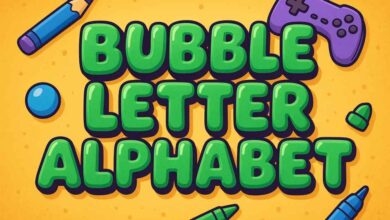Web Sudoku Evil Puzzles for Serious Solvers

If you love logic, pattern puzzles, and the slow satisfaction of a perfectly solved grid, you’ve come to the right place. This refined guide walks you through everything a serious solver needs to know about web sudoku evil puzzles: what “evil” means in practice, the advanced techniques that matter, how to practice reliably, how to pick the right playing environment, and a repeatable walkthrough style you can use to solve and annotate tough puzzles. The tone is friendly and practical written so you can apply each idea on the next puzzle you open.
What This Guide Gives You
- A clear, plain-English definition of web sudoku evil and how it differs from other difficulty levels.
- Step-by-step explanations of the advanced techniques most often required on evil puzzles.
- A detailed 30-day practice plan to make steady improvement.
- A practical walkthrough method you can use to annotate and solve any tough grid.
- A list of pitfalls to avoid and daily drills to build pattern recognition.
- Frequently asked questions and a short cheat sheet for fast reference.
You can read it from start to finish or skip to the part you’re interested in. This version has been refined for clarity and flow and contains no external links or technical code snippets.
What Does “web sudoku evil” mean?

On various sudoku websites, the term “evil” refers to the hardest puzzles available. These grids are designed to go beyond mere speed or number of givens — they require advanced logic, careful candidate management, and the ability to spot long or subtle patterns. In practice, an evil puzzle will:
- Provide fewer immediate singles and more positions that require multi-step reasoning.
- Demand the use of advanced techniques such as fish patterns, wings, chains, and almost-locked sets.
- Often feel like a slow-burn puzzle: progress comes in infrequent but decisive moves.
Important to know: “evil” is a label, not a formal standard. Different puzzle generators and sites may interpret difficulty differently. An “evil” puzzle on one site may feel comparable to an “expert” puzzle on another. The best approach is to judge each puzzle by the solving techniques it actually requires.
How Evil Differs From Hard and Expert
Think of difficulty as a ladder:
- Easy to Medium: Mostly singles and obvious placements. Good for beginners.
- Hard/Expert: Requires pairs, triples, and some intermediate patterns. Speed and candidate hygiene matter.
- Evil: Requires advanced patterns, multi-step chains, and deeper candidate management. Solving may require complex inference that is not immediate to the eye.
Practical differences for players:
- You’ll spend more time on candidate notation and updating candidates than on quick fills.
- The solver’s eye needs to learn how to spot fish patterns and chains quickly.
- Progress can stall; patience and a disciplined method are essential.
Core Advanced Techniques (plain English, no mystery)
Below are the primary techniques that separate “evil” from lesser difficulties. You don’t need to master every one at once, but each technique you learn opens many previously intimidating puzzles.
X-Wing
An X-Wing is a pattern that involves two rows (or two columns) where a particular digit can appear in only two columns (or rows). When those pairs of candidates line up, you can eliminate that digit from the same columns (or rows) in other locations. It’s a relatively common and powerful removal tool.
Swordfish
Swordfish is an extension of X-Wing to three rows (or columns). It’s less frequent but more powerful because it can remove candidates across three lines. Spotting Swordfish takes practice but yields big progress when present.
XY-Wing and XYZ-Wing
These are small-chain tactics involving three cells. The pivot cell and its two wings interact so that a candidate can be eliminated elsewhere. They are handy in mid-game logic when singles and fish don’t move you forward.
Almost Locked Sets (ALS) and AIC (Alternating Inference Chains)
ALS are groups of cells where the number of different candidates is exactly one more than the number of cells, creating tight constraints. Alternating inference chains string together strong and weak links between candidates to force eliminations. These techniques are central for many advanced logical leaps.
Forcing Chains and Nishio (controlled assumption)
When surface logic stalls, you can assume a candidate and follow the consequences.If an assumption results in a contradiction, you may discard that assumption. This is a disciplined, controlled way to make progress without random guessing.
Unique Rectangle and BUG Avoidance
Some patterns create near-symmetries that would allow multiple solutions unless a particular digit is placed to break the symmetry. Detecting these early prevents incorrect guesses and ensures the puzzle remains logically solvable.
Candidate Management and UI Features That Matter
If you play online or in an app, the interface can make a big difference for evil solving. Key features to look for:
- Full pencil marks support: Manual and automatic candidate notation.
- Candidate highlighting: Helps you see where a digit can go at a glance.
- Undo and save: Essential for testing chains or controlled assumptions.
- Timer and history: Useful for tracking progress and building consistent speed.
- Printable option: Some chains are easier to track on paper, so printing can be a practical option.
Good UI reduces friction. Choose the tools that let you focus on logic instead of fighting the interface.
Where to Play: what to test and how to choose
There is no single authoritative home for evil puzzles, and different platforms emphasize different things (training, casual play, printing). When selecting where to play, test sites for:
- The fidelity of their difficulty labels (do their “evil” puzzles genuinely require advanced techniques?).
- Quality of the UI and candidate tools.
- Availability of printouts and study features (save, replay, annotation).
- Community feedback about consistency and puzzle fairness.
A practical test: pick the same difficulty label on several platforms and try similar puzzles. Compare which sites consistently require advanced techniques and which seem to label easier puzzles as “evil.” This quick cross-check helps you find a site that matches your learning goals.
Common Pitfalls and How to Avoid Them
Pitfall: Trusting labels blindly
Difficulty labels vary. Don’t trust the tag alone — evaluate puzzles by the techniques they actually require.
Pitfall: Overusing hints
Hints are useful for learning but can become a crutch. Use them to confirm reasoning rather than to shortcut the thinking process.
Pitfall: Guessing without tracking
If you guess, track it. Save or note assumptions so you can revert. Guessing without keeping track or making the same guess over and over again either takes up valuable time or makes it harder to learn.
Pitfall: Poor candidate hygiene
Failing to maintain pencil marks after placements hides patterns. Update candidates immediately after confirming placements to keep the grid transparent.
A 30-Day Strategy to Become an Expert at Web Sudoku Evil
This plan assumes 20–45 minutes per day. It builds from core techniques through applied practice so you can steadily tackle evil puzzles.
Week 1 — Solid advanced basics
- Days 1–2: Focus on strong candidate management. Practice hidden and naked singles and pairs.
- Days 3–4: Add triples and basic X-Wing examples. Practice annotating each X-Wing you find.
- Days 5–7: Timed medium/hard puzzles focusing on accuracy.
Week 2 — Fish family and small wings
- Days 8–10: Practice X-Wing and Swordfish spotting drills. Work slowly and mark candidates.
- Days 11–14: Introduce XY-Wing and XYZ-Wing and apply them in single puzzles each day.
Week 3 — Chains and ALS
- Days 15–17: Study ALS basics and practice applying them.
- Days 18–21: Work on alternating inference chains and short forcing chains. Practice following chains to their logical conclusion.
Week 4 — Timed evil practice and review
- Days 22–25: Solve one evil puzzle daily, annotate every advanced move.
- Days 26–28: Timed sessions with a goal of logical cleanliness rather than speed first.
- Days 29–30: Review mistakes, re-solve puzzles you failed, and compile a “trick notebook” with patterns you missed.
Tip: Keep one slow “study session” each week where you methodically annotate every advanced move. Those notes are the fastest path to recognizing patterns in future puzzles.
Drill Exercises You Can Repeat
These short exercises help make advanced patterns automatic.
- Fish drill (10 minutes): Pick a digit, list where it can go in each row, then try to spot an X-Wing or Swordfish.
- Chain drill (15 minutes): Take a stalled puzzle and build a short assumption chain for a two-candidate cell. See whether it yields eliminations.
- Annotation drill (20 minutes): Solve slowly and annotate each intermediate advanced move. This doubles learning speed.
Repeat these drills frequently during the 30-day plan to increase pattern recognition.
How To Annotate and Solve an Evil Puzzle — A repeatable Workflow
Always apply this technique when faced with a difficult grid. A disciplined process reduces guesswork and increases clarity.
- First pass — scan for obvious moves (5–10 minutes)
- Find naked singles and hidden singles. Place them.
- Optionally add pencil marks across the grid.
- Second pass — pairs, triples, and quick fish (10–20 minutes)
- Look for naked/hidden pairs and triples. Fill or remove candidates accordingly.
- Look for X-Wings in numbers that show up in tight lines, either horizontally or vertically.
- Third pass — advanced patterns and chains (20–40 minutes)
- Search for Swordfish and other fish variants.
- Look for XY-Wing and XYZ-Wing opportunities.
- Examine ALS hints and attempt alternating inference chains when progress stalls.
- Controlled assumption (if needed)
- Pick a two-candidate cell and assume one candidate. Follow the chain until you either confirm or find a contradiction. Use save/undo if available so you can revert cleanly.
- Post-solve review
- Write brief annotations for the key advanced moves so you learn to spot them faster next time.
- Write brief annotations for the key advanced moves so you learn to spot them faster next time.
Example annotation style for your notebook:
Move 27: X-Wing on digit 7 rows 2 and 8 over columns 3 and 9 ⇒ eliminate 7 from r5c9 and r6c3.
This habit creates a training log you can review to accelerate recognition.
Are Evil Puzzles Always Solvable Without Guessing?
Most well-formed evil puzzles are designed to have a single logical solution that can be reached without guessing. However, some puzzle generators may create grids that practically require long or obscure inference chains that feel like guessing in practice. If you prefer purely logic-based solving, choose puzzle sets that advertise logic-only solvability or provide step-by-step explanations. Over time, many instances that once felt like guesses become logical with improved technique and chain practice.
Sample Solved Puzzle Walkthrough (method applied)
Below is a condensed, text-based example of how a solver might approach a complex section of a puzzle. The goal is to show the reasoning process rather than list exact coordinates.
- After the first pass you have about 25 placements and full pencil marks. No naked singles left.
- On digit 7 you spot two rows where 7 can only sit in two columns each and those columns line up — an X-Wing. You remove some candidate 7s across those columns. This creates a hidden single for digit 3 in a particular box.
- The hidden single reveals a new forced chain: a cell that had candidates 2 and 8 now becomes a single 2, which causes a ripple in an adjacent box where 8 becomes restricted to two cells.
- Those two cells form part of an almost locked set with two other cells. Using ALS logic, you eliminate a candidate 5 from a remote cell, which unblocks another chain.
- A subsequent scan reveals an XY-Wing using a pivot cell with candidates 1 and 6 and two wing cells. This removes a leading 6 candidate from a critical position and opens a final forced path to completion.
Key takeaway: big progress came from combining a fish pattern with chains and ALS logic. The synergy between techniques is what makes evil puzzles rewarding.
Quick Cheat Sheet For Every Web Sudoku Evil Start
- Add full pencil marks or at least mark dense areas.
- Scan for naked/hidden singles, pairs, and triples.
- Run a fish scan for X-Wing and Swordfish on each digit.
- Search for small wing types (XY, XYZ) as well as ALS markers.
- If totally stuck, attempt a controlled assumption on a two-candidate cell and track consequences.
- Annotate the big move and add it to your trick notebook.
Final Words — the value of tackling web sudoku evil
Evil puzzles refine logical thinking, patience, and pattern recognition. They are puzzles you come back to again and again because each solved grid teaches something new. If you follow the 30-day plan, cultivate disciplined candidate habits, and practice the core techniques in short daily drills, you will find what once seemed impossible becomes routine. The satisfaction of finishing a true evil puzzle is a quiet but deep reward: every hard-earned fill is proof of improved reasoning.
If you’d like, I can now convert this guide into a printable study pack of evil puzzles, produce a step-by-step annotated solution for one full evil puzzle, or expand any section into a deeper tutorial. Which would help you most next?
Frequently asked questions
Q: What exactly makes a puzzle “evil”?
A: An evil puzzle typically requires multi-step reasoning, advanced patterns, and precise candidate management. It is intended to challenge experienced solvers rather than casual players.
Q: How long does it take to get good at evil puzzles?
A: That depends on practice intensity. With 20–45 minutes daily and a focused approach, many players see noticeable improvement in 3–8 weeks.
Q: Do I need to memorize all techniques?
A: No. Start with a few (X-Wing, XY-Wing, Swordfish) and build gradually. Practice helps patterns become obvious without rote memorization.
Q: Should I solve on paper or use an app?
A: Both have benefits. Apps speed up candidate updates and timing. Paper can make complex chains and annotations easier to track. Rotate between both to develop flexible skills.
Q: Are some puzzles unfair or poorly made?
A: Occasionally, puzzle generators create grids that feel like guessing or have inconsistent difficulty labels. If you want logic-only puzzles, look for sources that emphasize logic solvability.



